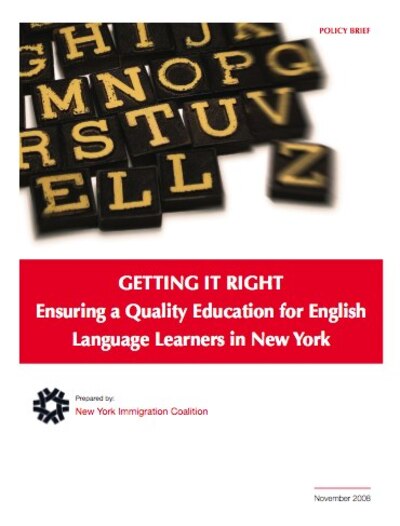
Students who are still learning English need twice as much funding as other students, says a policy brief released yesterday by the New York Immigration Coalition. The brief was based on a new, as-yet-unreleased study the Coalition commissioned from research and advocacy organization Multicultural Education, Training, and Advocacy, Inc. (META).
At present, funding for English Language Learners (ELLs) is approximately 1.5 times that of regular education students.
While the brief does not say how much additional funding the state should provide per pupil, EdWeek blogger Mary Ann Zehr estimated it at about $6,500 more for each ELL student than what is spent today.
Adding that much per student would be expensive. The study calculates that New York State would have to spend a total of $3.64 billion on ELLs, about 17% of total state aid to schools.
This sounds like a lot given looming state budget cuts, but the brief’s authors say it’s reasonable. “Given that ELLs make up 13% of the total student population and have one of the highest dropout rates in New York, the ELL Costing Out Study provides a sensible estimate of what it will take to provide ELLs with the adequate education they need and deserve,” they conclude.
The extra costs were calculated from a run-down of successful programs for teaching English Language Learners, such as class-size reduction, intensive coaching for teachers, and expanding pre-K and full-day kindergarten.
According to the policy brief, the META study was commissioned to correct inadequacies in earlier studies of the cost of educating all students in New York State, which were used as evidence in the Campaign for Fiscal Equity’s lawsuit challenging the legality of state funding formulas. Those studies included the needs of ELLs within the needs of all students in poverty, rather than looking at their needs separately, as they did for students with special needs. As a result, they underestimated the additional resources required to educate ELLs, the authors say.
Finally, as Zehr pointed out in her post, the brief’s authors question whether funding allocated to ELLs actually reaches them and emphasize the need for better monitoring of how funding is used. Similar concerns were raised this summer by ELL advocates at public hearings on the city’s Contracts For Excellence plan.
